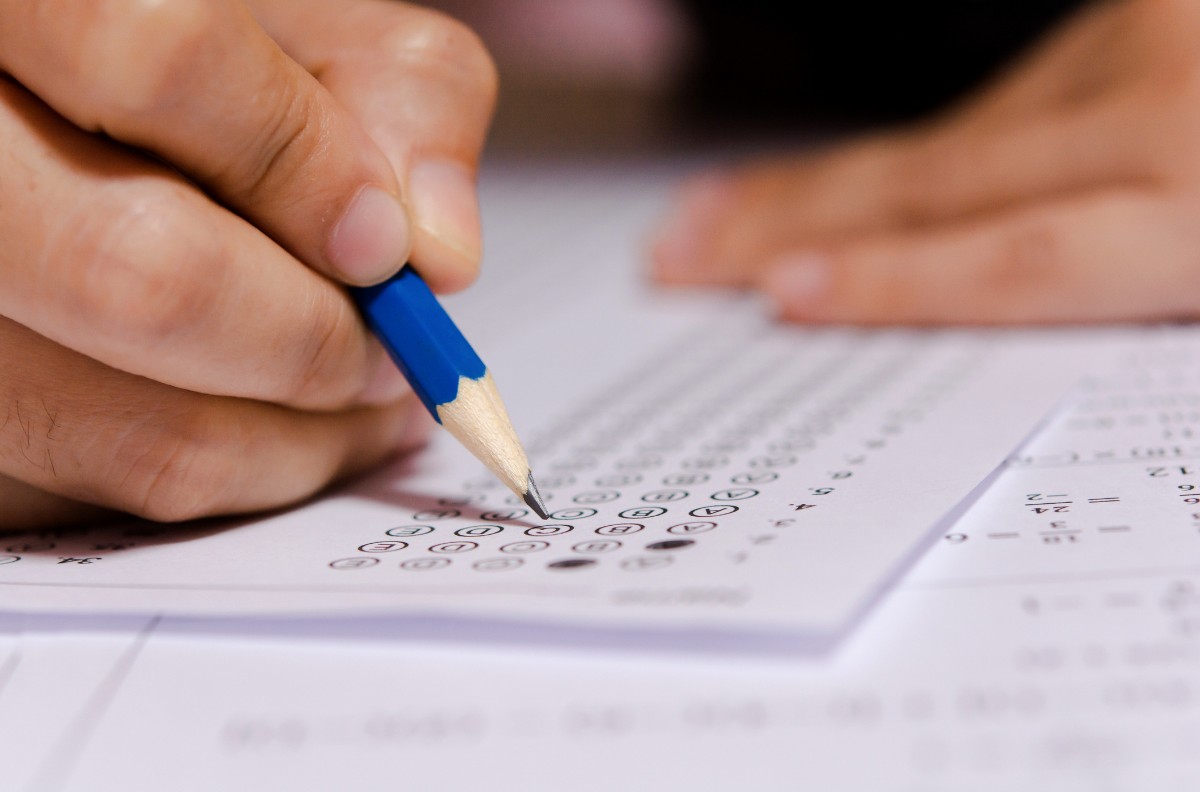
Ben Lovett, Professor of Psychology and Education at Teachers College. (Photo courtesy of Lovett)
Over the last 20 years, test anxiety —a combination of physical and cognitive anxiety symptoms related to test taking— has become increasingly prevalent in classrooms nationwide. As standardized tests carry a heavier weight, admission standards at top universities intensify, and the rise of AI prompts educators to focus more on in-class exams, test anxiety remains a growing cause for concern.
“Test anxiety can lead students to avoid studying, procrastinate, and use ineffective techniques like rereading notes instead of self-testing. In severe cases, some may skip school or even change majors to escape exams,” explains Ben Lovett, Professor of Psychology and Education at Teachers College, who has been studying test anxiety for years, working with clinicians, educators and students. “While anxious students can still perform well, letting anxiety dictate choices can lead to negative outcomes.”
Lovett’s new book Overcoming Test Anxiety, coauthored with Alex Jordan, lecturer in psychiatry at Harvard Medical School, offers evidence-based interventions for clinicians and educators to help students reach their full academic potential while navigating anxiety-related avoidance and test-taking fears.
Why Test Anxiety?

(Photo: iStock)
A 2024 study from Lovett surveyed nearly 3,000 students at a large public university and asked them to complete a questionnaire assessing their anxiety symptoms. Results showed that nearly all students reported experiencing at least one symptom of anxiety, with only about one percent not endorsing any symptoms. Students reported feeling uneasy and having difficulty concentrating due to grades and exam performance concerns.
“Since 2012, anxiety among young people has increased, with the proportion of college students reporting clinical anxiety doubling,” explains Lovett, with the pandemic adding a new layer of obstacles. “With the pandemic, we saw a trend of more exams moving online, causing students to worry about tech problems. The pandemic also briefly halted testing, and some students have had trouble returning to in-class tests.”
The Risks Students Face

(Photo: iStock)
When it comes to evaluating the consequences of test anxiety, Lovett shares that cause for concern is warranted. Test anxiety commonly results in higher levels of procrastination and avoidant behaviors when it comes to reviewing materials before exam day. “We often see students who have very high test anxiety avoid the study materials that cause them anxiety. As a result, they do poorly on their exam, and they blame their anxiety,” Lovett explains. “In a sense, that's right, but it's because the anxiety influenced their choices.”
In other cases, Lovett notes that students may not procrastinate entirely but instead choose less effective study techniques. “For example, students might copy their notes five times over or use electronic flashcards and turn them over before they can even understand the information, instead of forcing themselves to recall and explain material without looking at their notes.”
Lovett highlights that frequent testing qualms can lead students to seek short-term solutions. “Those with high test anxiety often label themselves as ‘bad test takers,’ making them more likely to resort to stimulant medications, prescription anxiolytics, or beta-blockers,” he explains. While these options may provide temporary relief, they typically lack long-term benefits and carry a risk of dependence.
On a larger scale, test anxiety has implications for educational equity. “Students with higher test anxiety are less likely to avail themselves of educational opportunities, simply because taking tests is so aversive. As they grow older and have more choice over their educational path, they avoid taking classes or attending educational institutions in which tests are required.”
Solutions for a Way Forward

(Photo: iStock)
With so much at stake, students need a healthy way to cope with test-taking fears. Lovett suggests mapping out a “game plan” ahead of exam day is a good place to start.
“The best thing students can do is work with parents, educators and clinicians to figure out what works best for their unique circumstances,” Lovett explains. “Each student’s pattern of symptoms is different, and we also consider whether they have a history of generally high or low test performance.”
Depending on a student’s symptoms, he often recommends interoceptive exposure therapy, a technique intended for those struggling with panic disorder or acute panic attacks, to be most effective over six to twelve weeks. “If a therapist were working with a child who was afraid of dogs, the therapy would have to involve introducing dogs at some point,” Lovett says. “In the same way, you have to introduce whatever is causing the fear, and in the case of test anxiety, it's sometimes your body's own response.”
The therapy involves inducing a physiological experience in a safe environment to help break the association between a threat (such as a test) and the body symptoms. One interoceptive therapy technique highlighted in the book is hyperventilation, which involves taking fast, deep breaths for a minute. “This generates rapid heartbeat and other sensations that students feel during exams. Practicing this daily helps them recognize that these feelings aren't dangerous, but actually similar to responses during exercise or excitement. It’s about breaking those associations.”
Additional coping strategies include relaxation techniques like diaphragmatic breathing and progressive muscle relaxation. A compelling 2010 study highlighted in the book found that third graders who practiced diaphragmatic breathing for five weeks significantly reduced their self-reported test anxiety. The book also covers strategies such as keeping a “worry journal” to off-load stress that a student is carrying. But for students with more severe panic symptoms during tests, Lovett says that interoceptive exposure is often needed.
“Many school-based mental health professionals avoid using exposure therapy techniques because they don't feel as though they're well trained enough or they're worried that a student will have a bad reaction. Our book empowers mental health professionals to use those techniques with appropriate consent while letting students know what to expect,” explains Lovett. For educators seeking a less intimidating starting point, he suggests psychoeducation, teaching students about test anxiety, and specifically about how people can perform well even if they’re feeling anxiety.
And for students, the results are certainly worthwhile. “It’s amazing how effective these behavioral techniques can be when used correctly. I still communicate with students I’ve worked with years later who can attest to the positive impact of these techniques. While they may be unpleasant or scary at first, we try to build motivation by asking students what it's worth to them regarding their goals and aspirations. It’s about providing that support along the way—that's what Overcoming Test Anxiety aims to do.”
